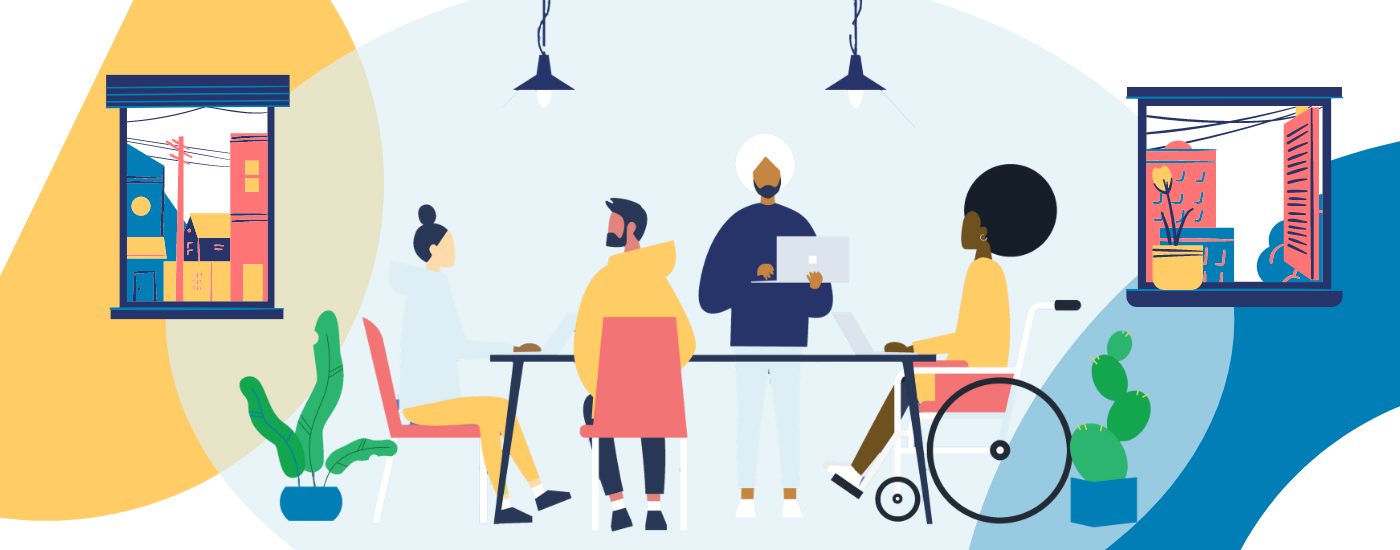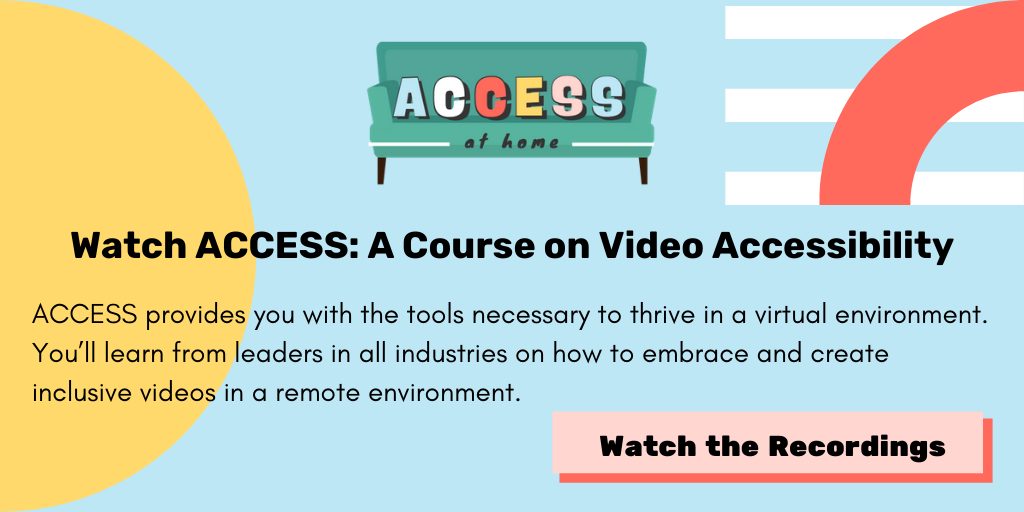4 Important Reasons to Practice Inclusive Design
Updated: October 23, 2023
Inclusive design is the key to ensuring no one gets left behind in our increasingly digital society, and it’s more pertinent now than ever before.
While presenting for Fall 2020 ACCESS at Home, Krissie Barrick, Head of Digital Influencing at Scope, put it this way: “Being locked out of the online world is the same as being locked out of the world.” With a pandemic that’s forced society into lockdown, many people have turned to the digital sphere to stay connected. However, people with disabilities often face many digital access barriers, which can cause them to feel distanced from society and left behind.
If we, as a society, advocate for inclusive design and digital accessibility, we can reduce the barriers people with disabilities face when engaging with products, services, and organizations. We can ensure they feel included as valued members of our society.
What is Inclusive Design?
There may be confusion when it comes to differentiating between accessibility and inclusive design. Both are important, but they are not the same.
Accessibility is based on set principles, such as Web Content Accessibility Guidelines (WCAG), that guide the design of digital products and services for people with disabilities.
According to Barrick, “Inclusive design goes a step further and involves disabled users. You can practice inclusive design before you have a product… and you should practice it in the testing and iteration of that product.”
Inclusive design is a human-centered approach to design that aims to apply to as diverse a range of people as possible. Inclusive design is also referred to as universal design, as it often benefits everyone and is responsible for now mainstream innovations such as curb cuts, electric toothbrushes, and closed captions.
The Value of Inclusive Design
Companies and organizations may wonder whether or not inclusive design makes commercial sense. The short answer is yes, it does.
Companies must be mindful of the opportunity to improve access for people with disabilities and be aware of the potential size of the market they could tap into. We also know that inclusive design benefits everyone in the long run, and it’s human-centered approach to design ensures a better user experience across the board.
Learn How to Embrace and Create Inclusive Content from Industry Leaders ➡️
Why else should we prioritize universal design?
It’s the Right Thing to Do
One could argue the most important reason to practice inclusive design is that it’s the right thing to do. The social model of disability says that people are disabled by barriers in society, not by their condition. Barriers are caused by physical obstructions, like inaccessible restrooms, and societal attitudes, like assuming that people with disabilities can’t do certain things.
Of the global population, more than one billion have a disability. According to Barrick, of those disabilities, many are invisible, hidden, or not immediately apparent. Hidden disabilities, such as hearing loss and some chronic illnesses (among many other disabilities), impact people’s requirements from society. Digital technology has, in many cases, transformed the lives of people with disabilities, providing peer support, independence, and connection. 78% of disabled people told Scope that having access to digital technology is helpful or very helpful for their daily lives.
It’s widely known that people with wheelchairs require ramps and elevators to navigate the physical world. We must also understand that people with disabilities need accessible technology to navigate the digital space.
Great for SEO
Incorporating accessible semantic structure (H1, H2 tags), alt text for images, descriptive link text, and closed captions on videos are inclusive design measures that do wonders for search engine optimization (SEO).
Designing websites and content with inclusive design in mind can increase your site’s visibility and reduce your site maintenance costs.
The proof is in the pudding. Barrick laid out a case study in which Legal & General, a financial services company, developed a new website with accessibility at the forefront. After the launch of its new website, Legal & General noted a 25% increase in organic traffic within the first 24 hours, which later increased to 50%. Page load times were reduced by 75%. There were site maintenance savings of over $200,000, a reduction in time spent managing site content, and within twelve months, Legal & General saw a 100% return on investment.
Boost Brand and Be a Market Leader
Standing for inclusive design, equal access, and opportunity for all won’t go unnoticed by consumers.
Barrick notes that consumers prefer brands that demonstrate an ethical, sustainable core. Nearly two-thirds of consumers prefer to purchase products and services from companies that stand for a purpose and avoid companies who don’t.
Prioritizing accessible design practices can even position your brand as a leader in innovation. For instance, Apple keeps inclusive design at the forefront of all that it does. Microsoft bakes accessibility features into core products and created apps for people who are blind and hard of hearing. Both brands are regarded as leaders of the tech sphere.
There’s even potential to gain a competitive edge by implementing inclusive design. A recent study from WebAIM found that 98% of home pages from one million global websites failed to meet the minimum accessibility standards. By innovating to include and listen to customers with disabilities, brands can stand out from others in their industry.
Increase Sales and Consumer Base
From Scope’s The Big Hack Reporting Tool, one person with a disability shared, “I would like to spend more than I currently do, but I can’t because it’s such a laborious task. If websites, apps, and stores were more accessible, then I’d spend more because I’d have no restrictions.”
In the U.S. alone, 26% of the population has a disability. The U.S. Department of Labor found that Americans with disabilities have $175 billion in discretionary spending. Barrick compares inaccessible design to a store doorway and notes that not designing in an inclusive manner is the same as blocking the door for one in every four customers trying to shop.
By conducting business in an accessible and inclusive way, companies have the opportunity to boost sales and grow their consumer base.
Incorporating universal design into brands makes good business sense, and it’s the right thing to do. It’s time we all do our part to help create a world where no one feels left out.
Like what you’ve learned? There’s a lot more where this came from. Check out our free recording library from Fall 2020 ACCESS at Home to learn about accessibility for remote education, the state of video in 2020, how to increase online engagement in remote environments, and creating cultures of inclusivity in workplaces.
Further Reading

Subscribe to the Blog Digest
Sign up to receive our blog digest and other information on this topic. You can unsubscribe anytime.
By subscribing you agree to our privacy policy.










